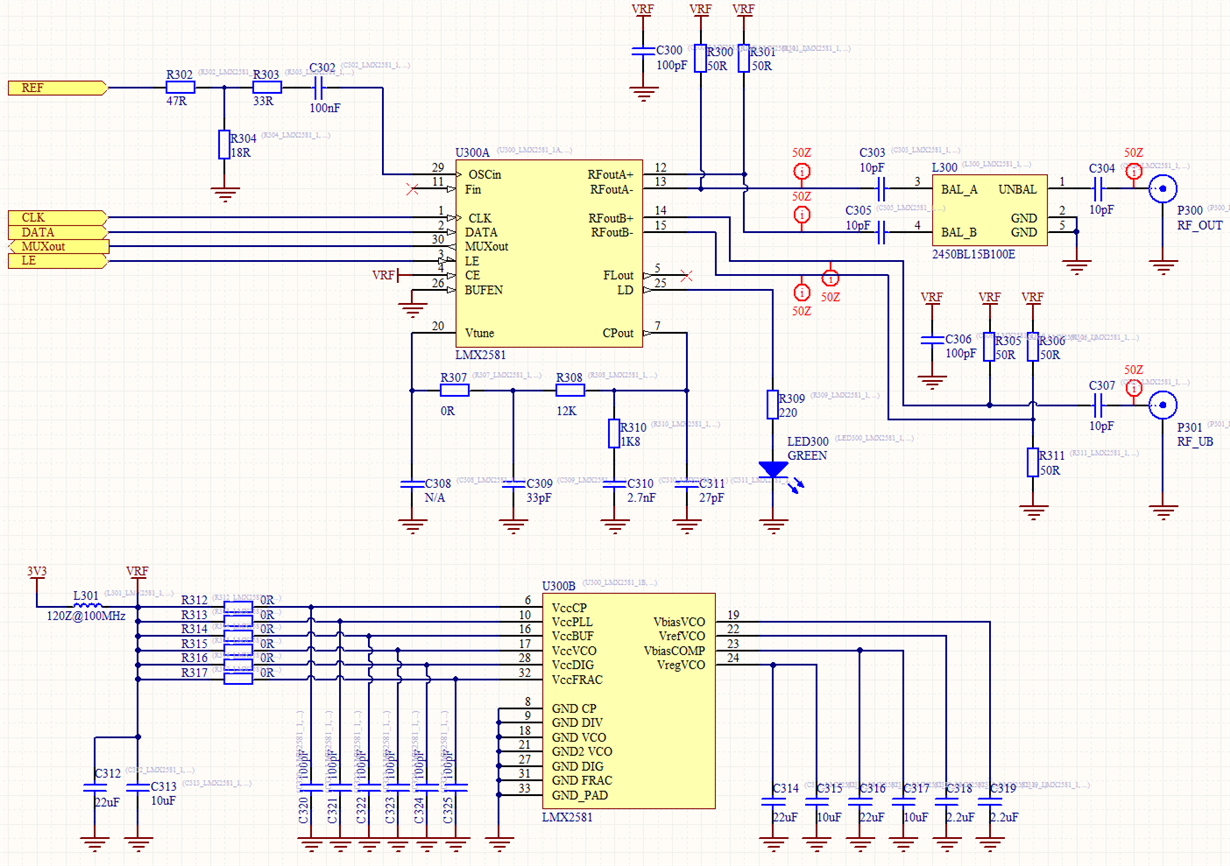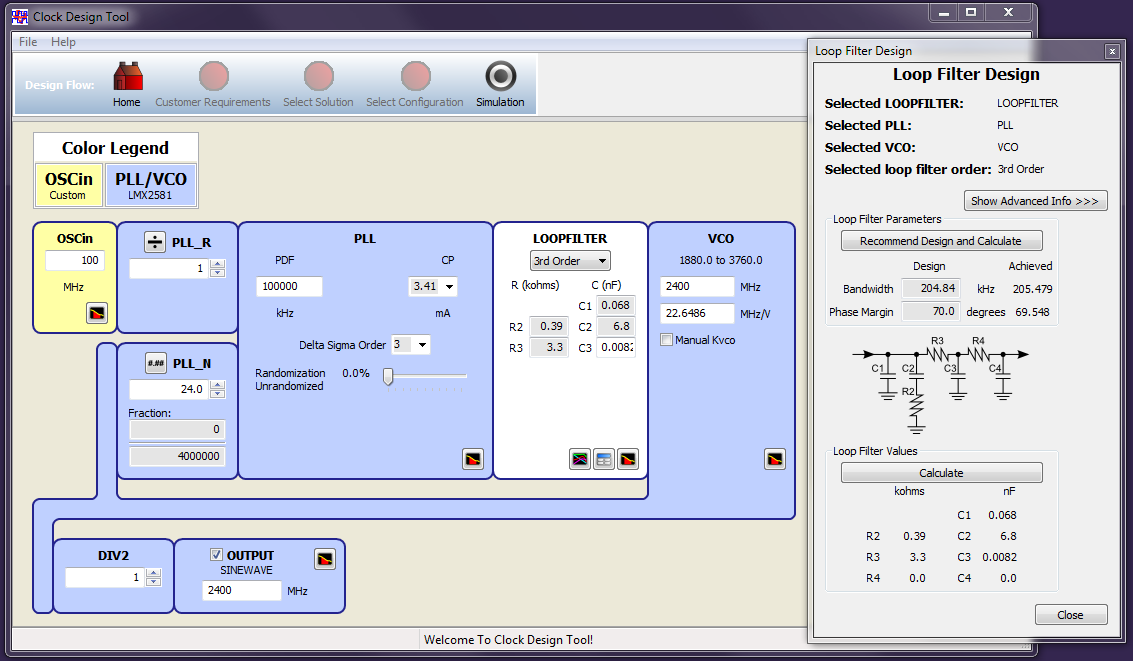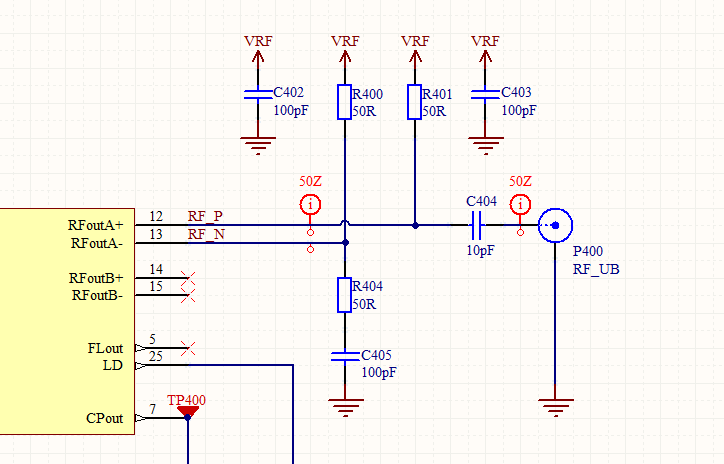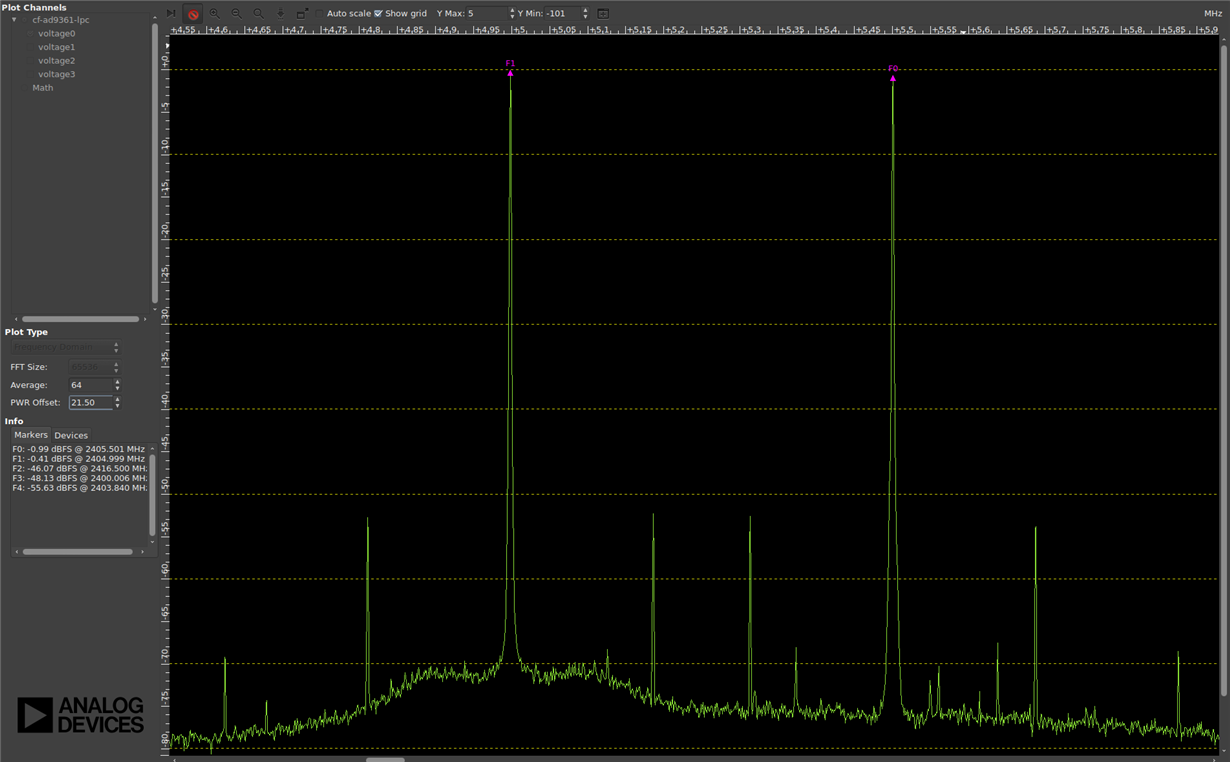Hi,
we are evaluating LXM2581 for a project that will need only a carrier frequency at around 2.4GHz, 0dBm to an 50ohm antenna via an smc connector.
I have some questions;
1) how well would it work to connect the antenna directly to one of the diff pins on LXM2581?
2) is it possible to use a balun directly with LXM2581, and if so, how would that improve signal quality? (not power, rather signal integrity, phase noise etc.)
Thanks in advance,
Mike





